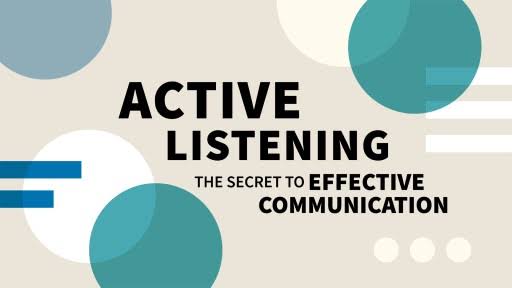Active listening is a communication skill that goes beyond simply hearing words. It involves fully concentrating, understanding, and responding thoughtfully to what someone is saying. In both personal and professional settings, active listening helps build trust, avoid misunderstandings, and improve relationships. In an era where distractions are constant, mastering this skill can set individuals apart and improve interactions significantly.
Understanding Active Listening
Active listening is different from passive hearing. It requires intentional engagement with the speaker’s message, focusing not only on their words but also on their tone, body language, and emotions. This form of listening encourages empathy and makes conversations more productive. Many professionals find that developing this skill enhances their leadership abilities, negotiation skills, and conflict resolution strategies.
Active listening also helps to reduce errors in understanding, as it allows for clarification and confirmation. This creates a foundation for clear communication and mutual respect.
Key Elements of Active Listening
There are several components that make active listening effective. These include:
- Paying full attention to the speaker without distractions
- Demonstrating interest through body language, such as nodding or maintaining eye contact
- Avoiding interruptions while the other person is speaking
- Reflecting and paraphrasing what the speaker has said to confirm understanding
- Asking open-ended questions for deeper insight
By combining these elements, listeners can build stronger connections with others and ensure that the intended message is received accurately.
Benefits of Active Listening in Professional Settings
Active listening plays a crucial role in workplace communication. It fosters teamwork, encourages open dialogue, and helps resolve issues faster. Employees who practice active listening often make better decisions because they fully understand the information before acting.
In leadership, it can increase trust between managers and their teams. When employees feel heard, they are more motivated and engaged. This also reduces misunderstandings and conflicts, leading to a healthier work environment.
For customer-facing roles, active listening ensures clients feel valued, which strengthens relationships and improves satisfaction.
Overcoming Barriers to Active Listening
Several factors can hinder active listening, including environmental distractions, preconceived notions, or multitasking during conversations. Modern workplaces, filled with constant notifications and background noise, often make it challenging to focus entirely on a speaker.
To overcome these barriers:
- Minimize distractions by silencing devices and maintaining eye contact
- Keep an open mind and avoid jumping to conclusions
- Focus on the speaker’s point of view rather than preparing a response while they are still talking
Practicing mindfulness can also help maintain attention during conversations.
Techniques to Improve Active Listening Skills
Developing active listening skills takes consistent practice. Some effective techniques include:
- Paraphrasing the speaker’s message to confirm accuracy
- Using verbal affirmations such as “I understand” or “That makes sense”
- Observing nonverbal cues to gain a deeper understanding of emotions
- Taking brief notes during important discussions without breaking eye contact too often
- Following up on previous conversations to show genuine interest
Role-playing exercises and communication workshops can also strengthen active listening abilities over time.
Active Listening in Conflict Resolution
When disagreements arise, active listening becomes an essential tool. By listening to each side carefully and without bias, individuals can identify the root cause of the conflict. This approach reduces defensiveness and promotes constructive dialogue.
In conflict resolution, active listening allows people to feel acknowledged, even if the outcome does not entirely favor them. This sense of validation often leads to quicker and more amicable resolutions.
Active Listening in the Digital Age
With the rise of virtual meetings and online communication, active listening requires new strategies. Video calls can limit the ability to pick up on subtle body language, while text-based conversations may lack tone.
To adapt, professionals can:
- Use visual cues such as nodding and maintaining an engaged posture during video calls
- Summarize key points in chat or email to confirm understanding
- Be more intentional about pausing and allowing others to speak without interruption
In digital communication, clarity and patience become even more important for maintaining effective listening.
The Long-Term Impact of Active Listening
Mastering active listening can transform personal and professional relationships. Over time, it builds stronger bonds, improves collaboration, and enhances problem-solving abilities. People who feel listened to are more likely to reciprocate with respect and openness.
By making active listening a habit, individuals can navigate complex interactions more effectively and create an environment where communication thrives. The skill not only benefits immediate conversations but also contributes to long-term success in various aspects of life.



